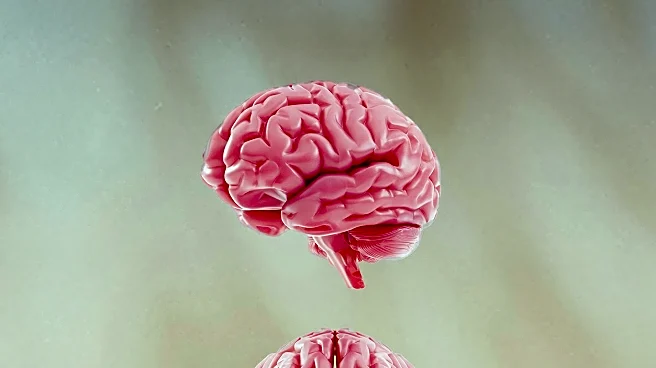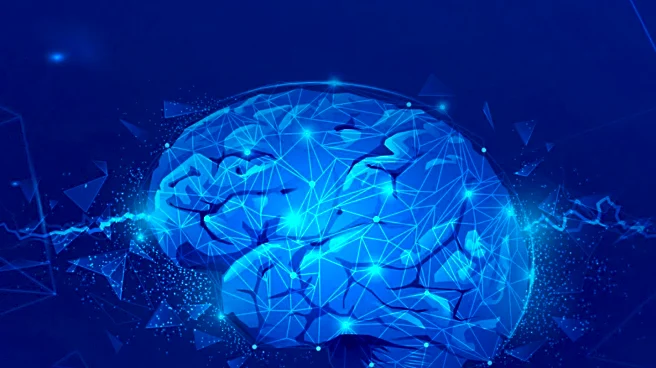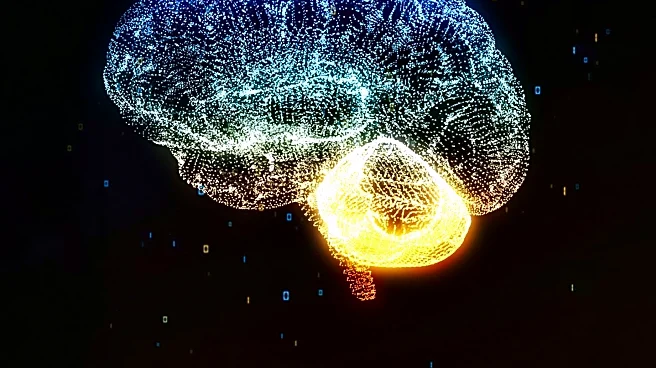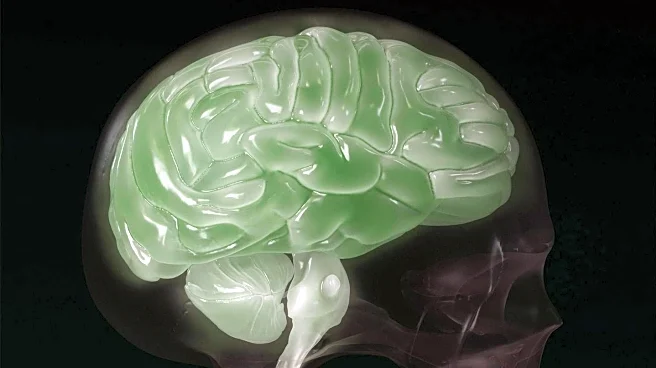What's Happening?
A recent study analyzed resting-state fMRI data from individuals diagnosed with schizophrenia and healthy subjects to explore alterations in brain hierarchy. The research focused on the asymmetrical interactions between brain regions, which are indicative of non-reciprocal communication and hierarchical organization. The study utilized advanced imaging techniques to assess the degree of non-equilibrium in brain dynamics, revealing significant deviations from the Fluctuation-Dissipation Theorem (FDT). These deviations suggest a disorder of integration across brain regions, contributing to the pathophysiology of schizophrenia. The findings underscore the importance of understanding hierarchical brain function in the context of mental health disorders.
Why It's Important?
The study's insights into the reconfiguration of brain hierarchy in schizophrenia have significant implications for the understanding and treatment of the disorder. By identifying the asymmetrical interactions and deviations from equilibrium, researchers can better comprehend the underlying mechanisms that contribute to the symptoms of schizophrenia. This knowledge may inform the development of targeted therapies and interventions aimed at restoring normal brain function. Additionally, the study highlights the potential for using advanced imaging techniques to explore brain dynamics in other neuropsychiatric conditions, paving the way for more personalized and effective treatment strategies.
What's Next?
Future research may focus on further exploring the hierarchical organization of brain regions in schizophrenia and other mental health disorders. Researchers could investigate the potential for therapeutic interventions that target specific brain networks to improve information integration and reduce symptoms. Additionally, the study's methodology could be applied to other neuropsychiatric conditions to uncover similar patterns of brain hierarchy reconfiguration. As the field of neuroimaging advances, there is potential for developing more precise diagnostic tools and treatment approaches based on individual brain dynamics.
Beyond the Headlines
The study's findings raise important questions about the ethical and cultural dimensions of mental health research. As scientists delve deeper into the complexities of brain function, they must consider the implications of their discoveries for individuals living with mental health disorders. The integration of advanced imaging techniques into clinical practice may challenge existing paradigms and necessitate a reevaluation of how mental health is understood and treated. This research underscores the need for ongoing dialogue between scientists, clinicians, and patients to ensure that advancements in neuroscience are applied in a manner that respects individual autonomy and promotes holistic well-being.










